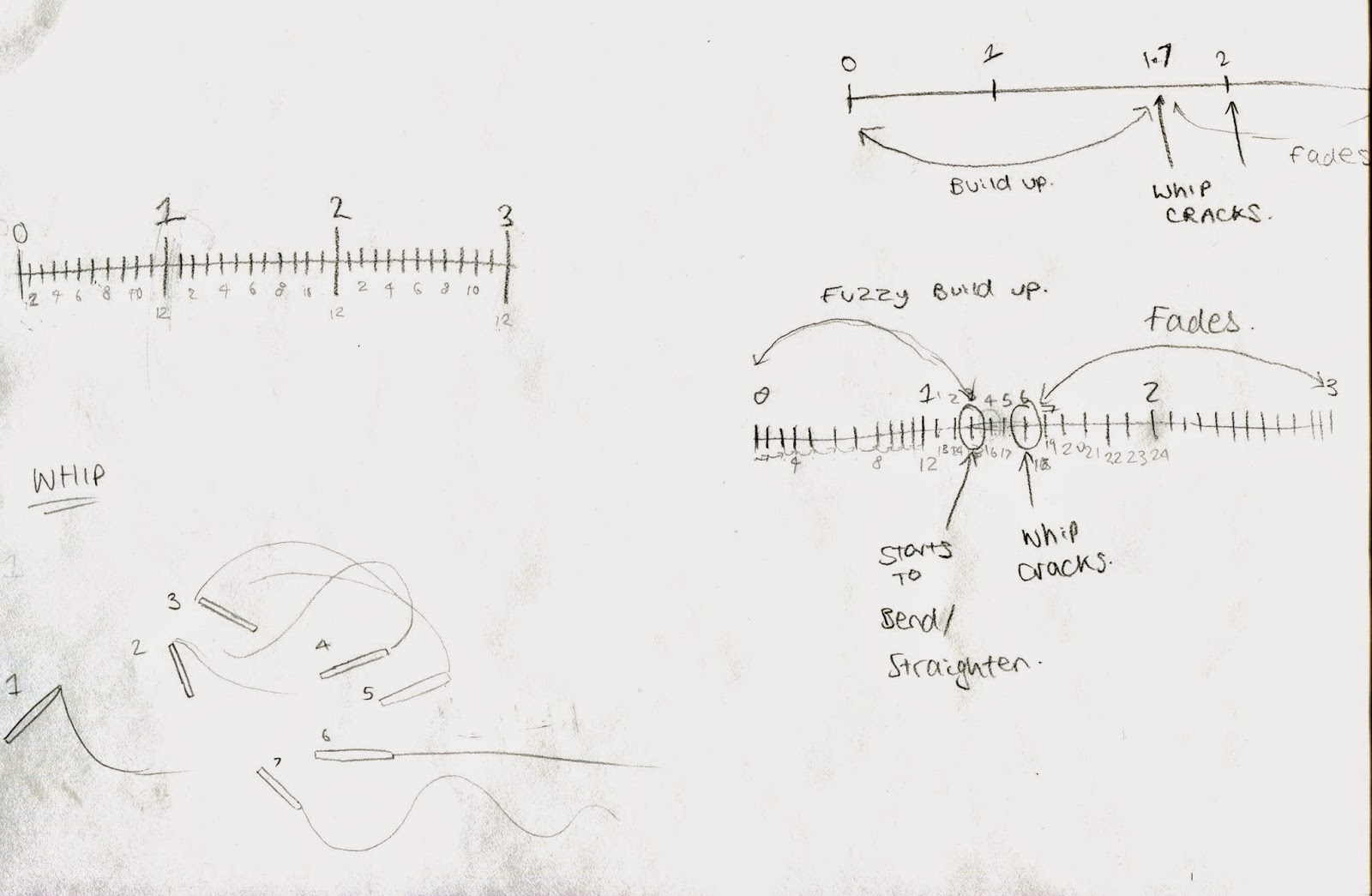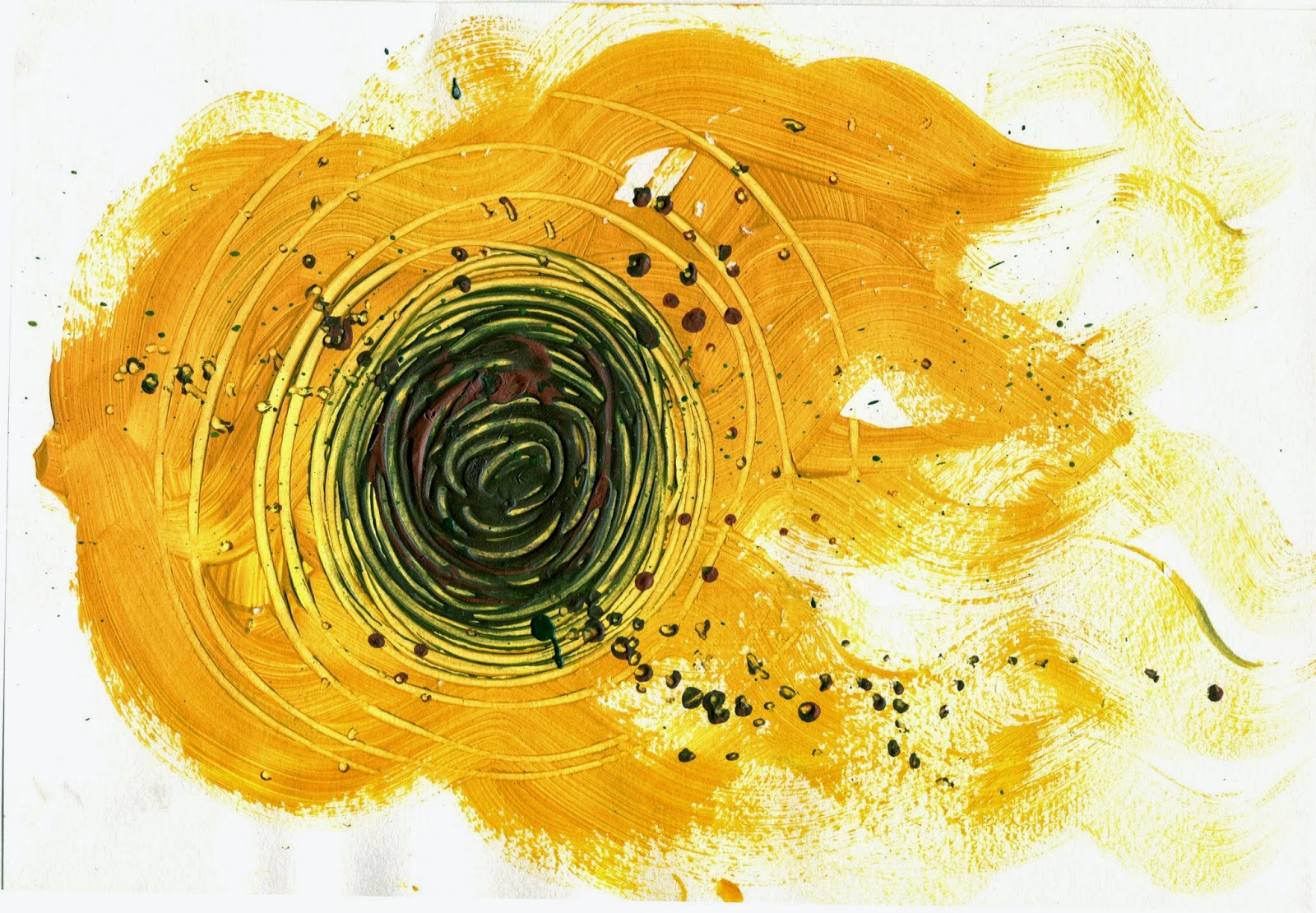I'm going to be honest and say that I started with sound 042 (my fifth sound) because it seemed like it was going to be the easiest to do, and I thought this would be a good place to start. From my plan I knew exactly what I was going to do, where as with some of the other sounds I was unsure of how I was going to make them work.
Planning the Animation
The only thing I had left to decide on with this animation, was the media I was going to use. I was stuck between using pencil and oil pastel. Both of which could give me the fuzzy texture I was going for, and in the end I chose pencil, simply because I prefer these sketches to my original oil pastel ones.
Planning Timing and Keyframes
Before I got started, I listened to the sound again, and picked out the times for my key frames, the most important being the "crack of the whip". The sound lasted three seconds, and the whip cracked at around 2 seconds and 7 frames in, so I worked out that I would need a build up of just over a second, with the whip preparing itself at around 2 seconds and 3/4 frames (if working at 12FPS). After the crack whipped the orb of electricity would begin to fade out and get smaller for the rest of the sound.
Final Animation 042
It didn't take me long to draw out my frames as I only had 36 to do, and the subject itself wasn't incredibly detailed. It also didn't have to move smoothly, as I wanted it to look quite jagged and energetic to represent the sound. I put the frames together in Photoshop, and then imported the video into Premiere where I added the sound. I don't know what happened but rather than the animation being 3 seconds long, it's now just over 2. This doesn't particularly bother me, as the sound still lines up nicely with the drawings, but I shall have to revise how I put the animation together, as it clearly isn't running at 12FPS.
I'm really pleased with how the first animation has gone, as I think the subject portrays the sound very well, even better than what it does as a static image. The drawings also line up well with the sound clip which I'm happy about, as I was unsure if my planning was going to be accurate.














































